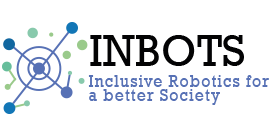
We interviewed Monica Malvezzi, Associate Professor of Mechanical Engineering at University of Siena and the INBOTS project coordinator in the WP3.
Which is the role of IUVO in the INBOTS project?
The researchers of the University of Siena involved in INBOTS have an extensive expertise in education and academic life. We developed a MOOC (Massive Open Online Course) in robotic grasping, entitled “The Art of Grasping & Manipulation in Robotics”, as well as a Matlab toolbox for modeling and simulating robotic grasping and manipulation. We have connections with schools and frequently provide seminars, lectures, workshops, courses, laboratory activities to school students and teachers.
For these reasons, the University of Siena is the perfect partner to leader the tasks involving the development of education programs in the field of interactive robotics, identifying present running programs and analyzing whether are the best practices and replicating them in new programs oriented to promote the best education systems to allow the professionals of the future develop better and more responsible interactive robotics, at the same time that the general public is aware about the development of these new technologies and learn how to interact with them in their daily life.
What is the entry point for the WP3 tasks?
During the first phase of the project we analysed the state of the art regarding robotic education resources. To have a clear vision, we divided resources according to the target public: schools, universities and people outside the educational system.
Which are the working guidelines?
We have two main guidelines. On one side, in the project we seek to complete a state of the art analysis on education resources and programs, by means of desk research, online surveys and interviews. The idea is to make the results of the analysis available as an open database of educational resources. On the other side, we want to promote and extend the discussion on WP3 topics, by organising specific workshops, attending thematic conferences and events, connecting with other projects.
What are you pretending to achieve?
The aim of WP3 is developing and promoting highly accessible and multidisciplinary education programs at various levels in the society. In particular, we intend to promote activities related to education in and with robotics, and create networks between researchers, educators, end-users, and industries.
With who are you collaborating?
We collaborate with consortium partners involved in WP3, in particular with EDUMOTIVA, which has extensive experience in robotic educational tools for schools and teachers. During the project we also established connections with COST Action CA16116 – Wearable Robots for Augmentation, Assistance or Substitution of Human Motor Functions WG 5 – Education and Dissemination, with the DIH² Network (DIH² is a network of 26 DIHsm, the aim of the network is to spark incremental and disruptive innovations in Manufacturing SMEs and Mid-Caps), and with EU Robotics Topic Group on Education and Training.
Which are the main challenges?
We acknowledge that the role of training and education is very important, since robotic systems are quickly evolving, also outside research laboratories and rigid production cells. The main challenge is to reduce as much as possible the gap between the knowledge that is required to successfully understand and manage such a transformation and the available training and education tools.
